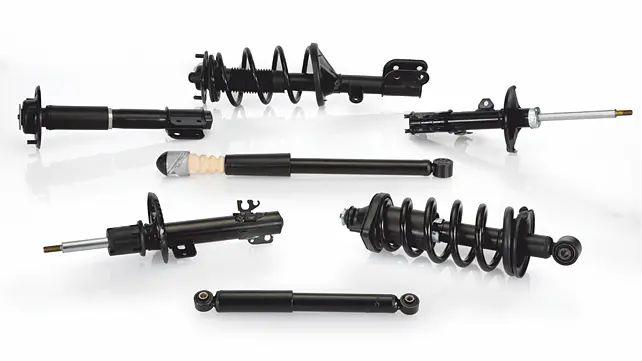
The global automotive suspension market is expected to grow from $ 42.9 billion in 2021 to $ 50.7 billion in 2026, at a CAGR of 3.4%, states a report from MarketsandMarkets.
The report -Automotive Suspension Market by architecture (MacPherson Strut, Double Wishbone, Multi-link, Twist Beam, Leaf Spring, Air Suspension), system type, actuation, component OE & aftermarket, vehicle (ICE, BEV, HEV, PHEV), and region - Global Forecast to 2026, finds that the increase in demand for vehicle comfort and safety and increasing adoption of air suspension systems in HCVs is expected to boost automotive suspension market significantly. Increasing sales of electric vehicles to provide lucrative growth opportunities to active suspension, it added.
The automotive suspension market is dominated by global players and comprises several regional players as well. The key players include ZF Friedrichshafen (Germany), Tenneco (US), Continental (Germany), Thyssenkrupp (Germany), and Benteler (Austria).
Fastest growing market
The growing demand for advanced suspension systems to improve vehicle suspension and occupant comfort is a significant factor driving the demand for the active suspension system. Moreover, the higher demand for high-end luxury and sports cars globally is currently driving the active suspension market globally.
MacPherson strut
In terms of volume, the MacPherson strut architecture is expected to be a potential segment of the automotive suspension market during the forecast period. MacPherson strut eliminates the need for a separate upper control arm, which reduces the cost components and weight of the architecture. Countries like China, India, and Japan opt for this cost-effective architecture, which is expected to drive the market during the forecast period.
Asia Pacific leads the pack
Countries such as China, Japan, India, South Korea, and the rest of Asia Pacific are considered under the Asia Pacific for market analysis. The region is the leading producer of automotive suspension systems and is expected to retain its position in the coming years. It is the largest producer of economical cars in the world. However, due to the increasing demand for premium cars, OEMs have started investing and developing advanced technologies for the automotive industry. Although countries, such as Japan and South Korea, are the leaders in technology, India and China have the largest vehicle production in the Asia Pacific region.
This region has emerged as a hub for automotive production in recent years, owing to changing consumer preferences, increasing per capita income of the middle-class population, and cost advantages for OEMs. Consumers in the region are inclined toward compact and cost-effective cars. The region has witnessed higher growth than the matured markets of Europe and North America due to the easy availability of labour, safety norms, and government initiatives for FDIs. China, the world's largest automotive market, remained the main driver of regional sales in the Asia Pacific in 2020. The primary demand for new vehicles in China remains strong, given its vehicle penetration rates (compared to that of developed markets) and its rapidly expanding replacement market. According to MarketsandMarkets Analysis, China is estimated to be the largest market for vehicles equipped with suspension systems in terms of value and volume in the Asia Pacific region.
Courtesy: MarketsandMarkets. Photo is representational; courtesy: Gabriel.